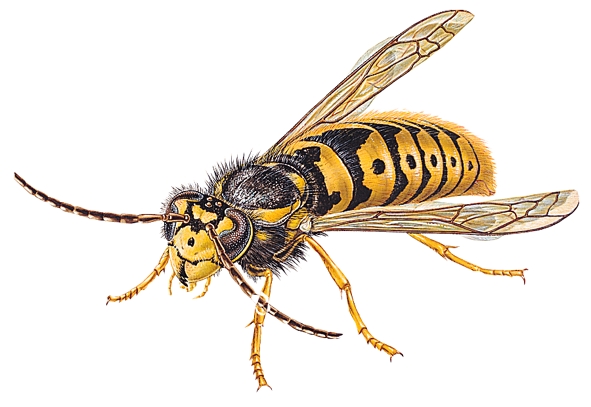Wasps

Appearance
- The common wasp is between 10-20mm in length although with several different species the sizes can vary.
Biology
- The queen emerges in spring and begins building a nest which starts off about the size of a golf ball.
- The nest building is taken over by the workers (sterile females) after the first batches of young hatch and is made up of chewed wood mixed with saliva, forming papier mache.
- After a long growth period over the spring, summer and autumn a colony can contain as many as 15,000-25,000 wasps, although 5,000-10,000 are more common numbers during a successful year for this species.
- After the fertile males and females have been laid and bred during the late summer/early autumn, all wasps die off apart from the fertilised queens who seek refuge during the cold winter before the cycle starts all over again in the spring.
Habitats
- Nests will be built anywhere a queen deems to be suitable from a hole made in the ground, to cavities, attic spaces, trees and shrubs. We alone have removed nests from A4 ring binders and under a pillow in a spare room!
- Wasps will predate on insects such as aphids and flies for the earlier parts of the summer which are subsequently fed to the eggs in the nest. Later on in the year, when all the young are reared wasps are often found eating ‘sweet’ foodstuffs such as fruit when they can become a particular problem during a spot of al fresco dining!
- Unlike bees wasps can sting repetitively and, are easily provoked.
- It is believed that the Chinese learnt how to make paper by watching the wasp construct their nests.
Treatment
- Certain Bee species can be successfully removed from situ and relocated to a safe location.
- Upon detection of a nest, elimination can be achieved within 1-2 hours of treatment. This is essential due to the often aggressive nature of these insects.
- Foraging flying insects can also be reduced using liquid dome traps both on a commercial and domestic basis. This can reduce the risk of potential stings and nuisance activity.